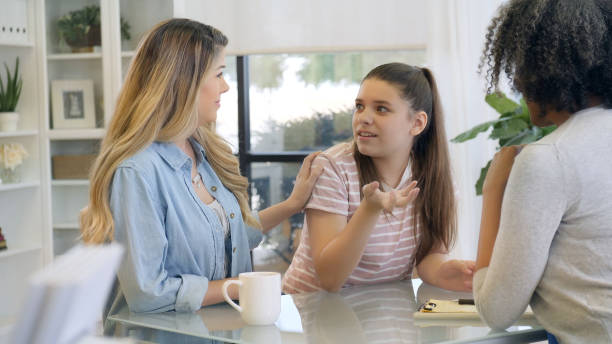The first menstrual period heralds a significant change in a young woman’s life. But as a teenager grappling with a new cycle, you can have many questions and doubts about it. This article attempts to explain a few facts.
The first period – What you should know about it
- The very first period is known as ‘menarche’ and it occurs at different times for different girls. Some girls get their first period at age 10, others not till they are 16 or 17 years old. The average age for the first period is 12 to 13 years.
- The first period may last about 3 days for most girls, while others bleed up to 7 days. It can be light bleeding for a couple of days before the flow tapers off to spotting.
- The first year or two after menarche will typically not have a regular rhythm. While there may be a 30-day gap between the first and second period, the gap may increase between the second and third, then shorten between the third and fourth, and so on. After a year has passed from the first period, it is safe to map the period frequency. Frequency is measured from the first day of the last period to the start date of the next period. It is typically between 25 to 30 days for most women.
- The amount of bleeding and duration of the period also varies in the first two years. The body takes some time to adjust to the fluctuating hormonal changes, and this results in less or more bleeding, longer or shorter gaps between periods, and so on.
- Since periods are irregular for a few months after menarche, it is better to keep a few sanitary pads in your bag, just to be safe. Also keep a bottle of intimate wash in your bag in case your period starts in school and you need to feel clean before using a sanitary pad.
- It is common to get rashes from sanitary napkins. Most sanitary pads in India are manufactured using synthetic materials and also feature ingredients like scents and bleach. Switch to a brand that has zero toxins and 100% cotton to ensure a no-rash and most comfortable period.
- You will notice some signs or changes in your body when the period is imminent, such as acne breakouts, oily skin, bloating around the middle, headache, backache, loose stools and even mood swings.
What’s a normal period for a teenager?
The first period is unique to every girl, so it’s difficult to hazard an estimate about what is normal and what is not in terms of flow, duration, accompanying discomfort, etc. But the period frequency must begin to establish a regular pattern as the days go by.
And yet, there are some signs to look out for which might be abnormal, such as:
* Extra hair on the face and body: Hirsuteness that starts after the advent of the menstrual cycle must be checked by a doctor. It indicates the presence of extra androgens, which cause extra hair growth, weight gain and irregular periods.
* Sudden weight gain: This can indicate thyroid hormone imbalances. In the long run, these can cause period irregularities.
* Excessive bleeding: If you soak more than 4 sanitary napkins and have a cycle lasting longer than 7 days, it indicates excessive bleeding.
* Regular periods become irregular: Suppose you had a near-constant period frequency for a year and the gap between two cycles has now increased, you should see a doctor.
What are some of your unique concerns about your period? Tell us in the comments below.

